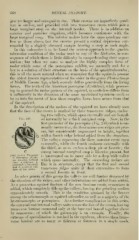Page 458 - My FlipBook
P. 458
468 DENTAL ANATOMY. ;
jaw are larger and subequal in size. Tlieir crowns are imperfectly quad-
rate in outline, and provided with two transverse crests which join a
large marginal cusp on the internal border. There is in addition an
anterior and posterior cingulum, which becomes continuous with the
large marginal cusp. The inferior molars have the same quadrate out-
line as those above, but the crowns present a central depression sur-
rounded by a slightly elevated margin bearing a cusp at each angle.
In this sub-order is to be found the nearest approach to the quadri-
tubercular condition of the molar teeth in any of the Rodcntia, in con-
sequence of which there is little difficulty in comprehending their organ-
ization ; but when we come to analyze the highly complex form of
molar which some of the porcupines exhibit, we naturally seek for a
key to a solution of their structure on the basis of the quadritubercular
this is all the more natural when we remember that the squirrels present
the oldest known representatives of the order in the genus Plesiarctomys
of Middle Eocene Age, which scarcely differs generically from the living
forms. The teeth of the American porcupine (JEref/iizon), while possess-
ing in general the molar pattern of the squirrel, nevertheless differs from
it sufficiently in the direction of the more specialized hystricine teeth to
let us into the secret of how these complex forms have arisen from that
of the squirrel.
In the description of the molars of the squirrel we have already seen
that the face of the crown is marked by three transverse ridges, enclos-
ing two valleys, which open externally and are bound-
ed internally by a thick marginal cusp. Now, in the
first premolar of the porcupine (Fig. 248) which is un-
usually instructive, the three transverse ridges are pres-
ent, but considerably augmented in height, together
with a fourth ridge behind added from the cingulum.
The valleys separating the three anterior crests open
externally, while the fourth coalesces externally with
the third, so as to enclose a deep pit or fossette ; the
C strong internal marginal cusp is likewise present, but
Lower Pjtnioiar
^i^f* j^ iiiterrui)ted ou its inner side bv a deep wide vallev
of Porcupine [Eifthi- 1 . . 1
zon d(jrs(iii.s), vertical Avliich opcus internally, ihe succeeduig molars are
porterior;r, internal; like it in structure, cxccpt that the first and second
trausversc ridges unite at their extremities to form
facts 'oAllrcrown"''
a second fossette in front.
In other genera of this group the valleys are still further dee])ened by
the elevation of the ridges, and other indentations are added from within.
As a protection against fracture of the now laminar crests, cementum is
added, which completely fills up the valleys, leaving the grinding surface
approximately smooth. This is the condition attained by the beaver
among the sciuromor])h or squirrel sub-order, as well as a majority of the
hystricomorphs or porcupines. As a further comjilication in this series,
the external and internal valleys unite across the face of the crown, leaving
transverse laminae connected only at the base and bound together above
by cementum ; of which the guinea-pig is an example. Finally, the
extreme of specialization is reached in the cajiybara, wherein these trans-
verse laminae are as many as thirteen or fourteen in a sinarle tooth.


